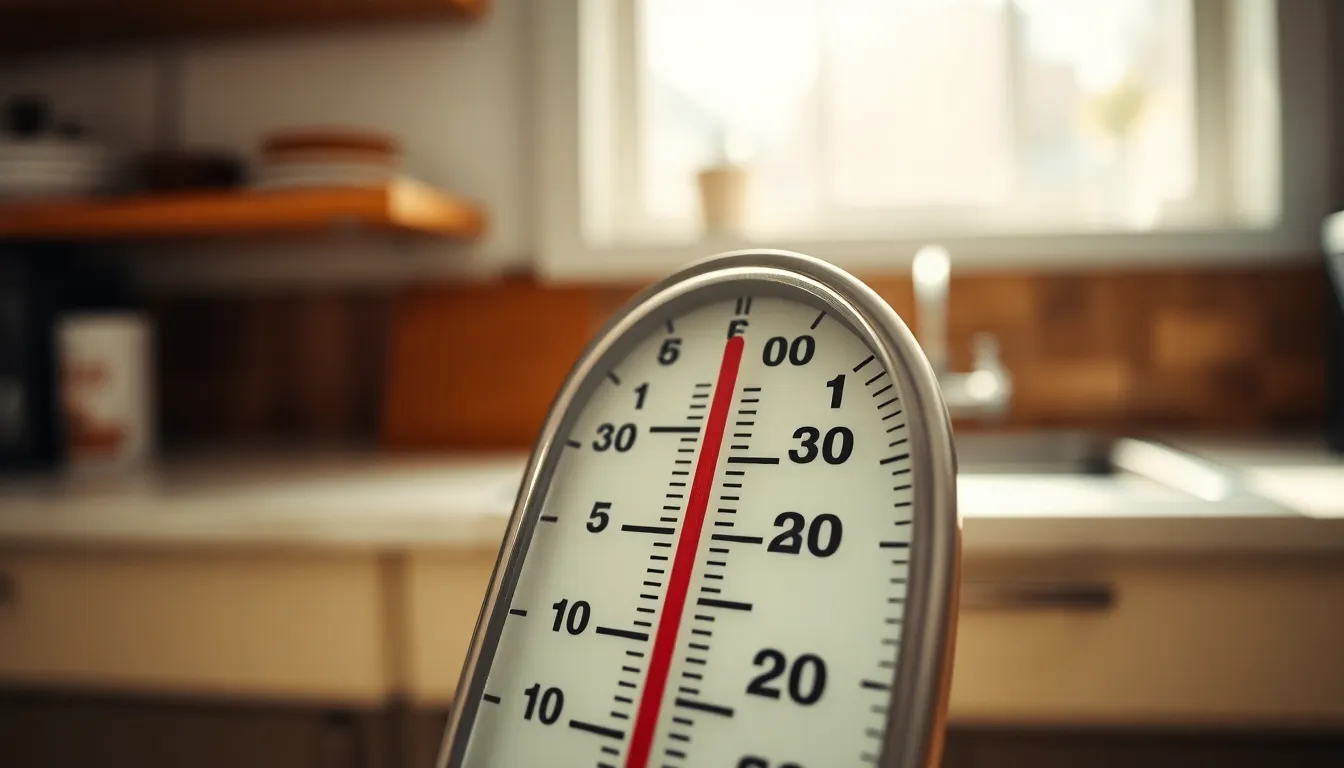When it comes to temperature, the world seems to be divided into two camps: Celsius and Fahrenheit. It’s like a never-ending debate over pizza toppings. But what if you just want to know what 1 degree Celsius really means in Fahrenheit? Spoiler alert: it’s not a hot cup of coffee, but it’s still pretty interesting.
Table of Contents
ToggleUnderstanding Temperature Conversion
Temperature scales play a crucial role in everyday life, requiring a basic understanding of how Celsius and Fahrenheit measure heat. This knowledge simplifies weather reports, cooking, and scientific discussions.
Celsius and Fahrenheit Scales
Celsius measures temperature based on the freezing and boiling points of water, specifically defined as 0 degrees Celsius and 100 degrees Celsius, respectively. Fahrenheit, developed by Daniel Gabriel Fahrenheit, uses a different approach. Its scale defines the freezing point at 32 degrees Fahrenheit and the boiling point at 212 degrees Fahrenheit. Converting between the two scales can seem perplexing but it’s quite straightforward once the formulas are applied. For example, 1 degree Celsius equals 33.8 degrees Fahrenheit.
Importance of Temperature Conversion
Temperature conversion remains essential for various reasons. Scientists rely on accurate temperature measurements to conduct experiments and report results. Travelers encounter temperature differences across regions with varying scales. Understanding the conversion fosters effective communication about weather conditions, cooking temperatures, and scientific phenomena. Knowing how to convert temperatures enhances comprehension and enables informed decisions in everyday tasks.
How to Convert Celsius to Fahrenheit

Understanding how to convert Celsius to Fahrenheit involves a simple formula. This method allows for accurate temperature readings based on different scales.
The Formula for Conversion
The formula for conversion is straightforward: F = C × 1.8 + 32. Here, F represents Fahrenheit and C signifies Celsius. This equation provides a clear path for transforming any Celsius temperature into its Fahrenheit equivalent. For example, converting 1 degree Celsius results in 33.8 degrees Fahrenheit. Familiarizing oneself with this formula makes temperature conversions efficient and precise.
Step-by-Step Conversion Process
To convert Celsius to Fahrenheit, start by taking the Celsius temperature. Next, multiply that number by 1.8. Afterward, add 32 to the result obtained from the multiplication. This process yields the Fahrenheit temperature. For instance, when converting 1 degree Celsius, the calculation goes as follows: 1 × 1.8 = 1.8, then 1.8 + 32 = 33.8. Following these steps consistently ensures clear and accurate temperature conversion for various applications.
Practical Examples
Understanding the conversion of temperature scales makes daily activities easier. Here are some practical examples illustrating these conversions.
Example 1: Converting 1 Degree Celsius
To convert 1 degree Celsius to Fahrenheit, utilize the formula F = C × 1.8 + 32. Starting with 1 multiplied by 1.8 gives 1.8. Adding this result to 32 results in 33.8 degrees Fahrenheit. Thus, 1 degree Celsius directly translates to 33.8 degrees Fahrenheit. This conversion provides clarity in contexts where Fahrenheit is more commonly used.
Real-World Applications of Temperature Conversion
Temperature conversion holds significant importance in various scenarios. In cooking, recipes often list temperatures in Fahrenheit, making it crucial for cooks familiar with Celsius to convert accordingly. Travelers between countries using different scales need to ensure accurate weather forecasts. Additionally, scientific research relies on precise temperature measurements, impacting experiments and results. By understanding these applications, one can confidently navigate temperature discussions in diverse situations.
Common Misconceptions
Many people confuse the Celsius and Fahrenheit scales, not realizing they represent different temperature systems. Celsius measures temperatures based on the freezing point of water at 0 degrees and the boiling point at 100 degrees. On the other hand, Fahrenheit sets these points at 32 degrees and 212 degrees. This difference often leads to misunderstandings, especially among travelers or those learning about temperature for the first time.
Misunderstanding Temperature Scales
Misunderstandings frequently arise when comparing Celsius and Fahrenheit temperatures. Some individuals assume that a small degree difference has the same significance in both scales. Conversions show that 1 degree Celsius equals 33.8 degrees Fahrenheit. This discrepancy in how temperatures feel can mislead people, especially in discussions about weather. The actual difference affects people’s perceptions and responses, especially when seeking appropriate clothing or preparation.
The Impact of Incorrect Conversions
Incorrect conversions can lead to significant issues in daily activities. A chef using the wrong temperature when preparing a meal may end up with undercooked or overcooked dishes. Similarly, travelers relying on inaccurate weather forecasts often find themselves unprepared for the conditions they face. In scientific contexts, precise temperature measurement is critical. Mistakes can skew experimental results and impact important findings. Awareness of accurate conversion methods fosters better communication and understanding in diverse situations.
Understanding the conversion from Celsius to Fahrenheit is more than just a mathematical exercise. It plays a vital role in daily activities like cooking and traveling. When one degree Celsius translates to 33.8 degrees Fahrenheit, knowing this can prevent mishaps in the kitchen or ensure travelers are prepared for varying climates.
By grasping these conversions, individuals enhance their ability to communicate effectively about temperature in various contexts. This knowledge not only fosters confidence but also promotes informed decision-making, whether one is experimenting in the lab or planning a trip. Embracing the nuances of these temperature scales enriches everyday experiences and interactions.



